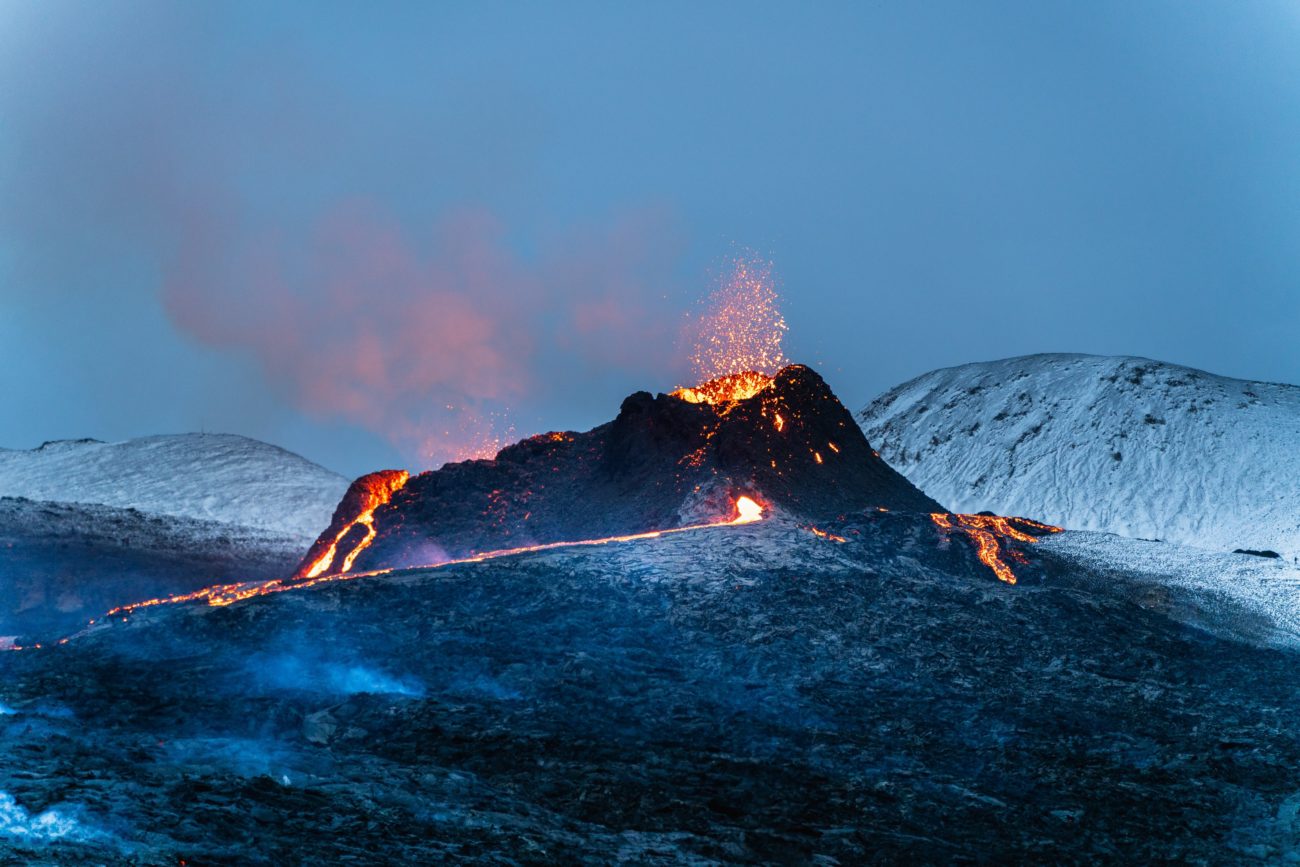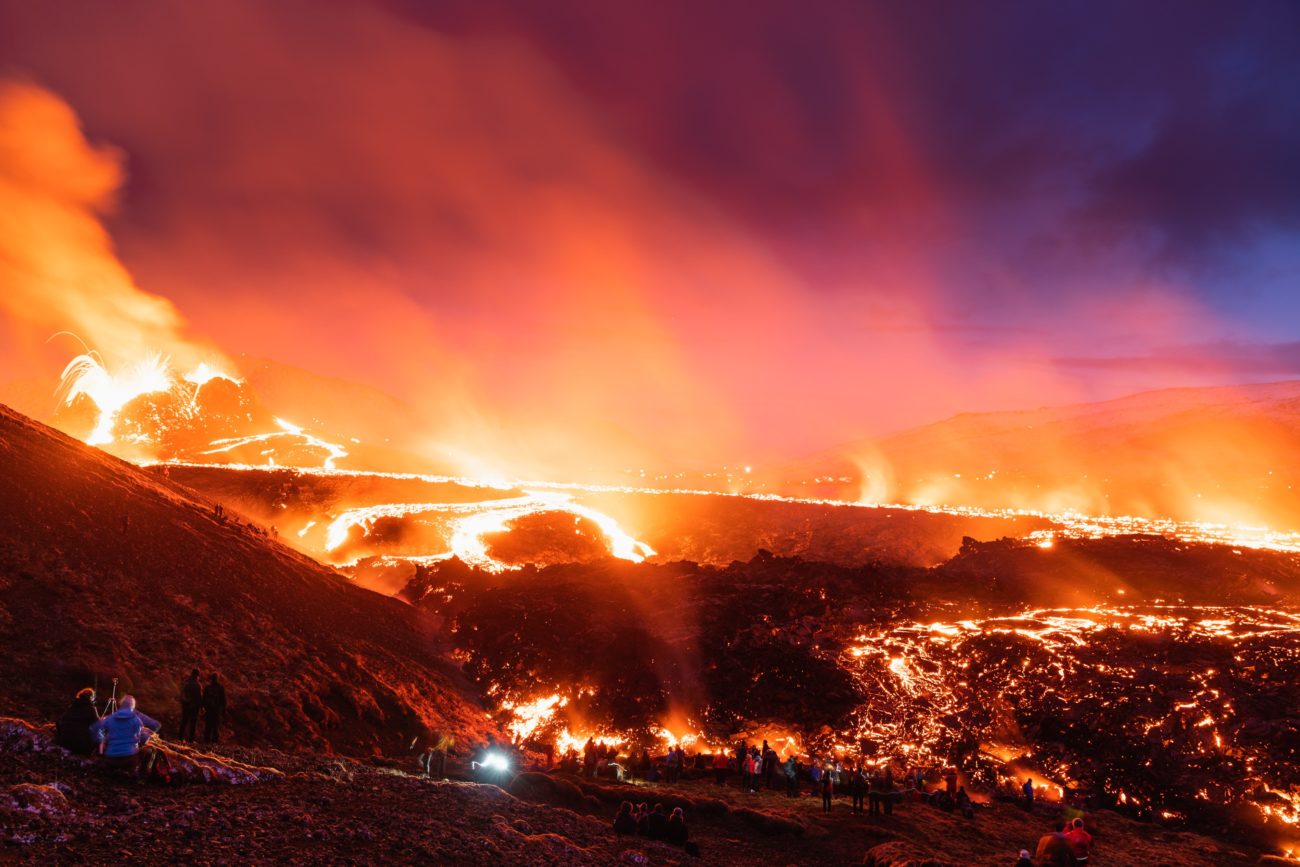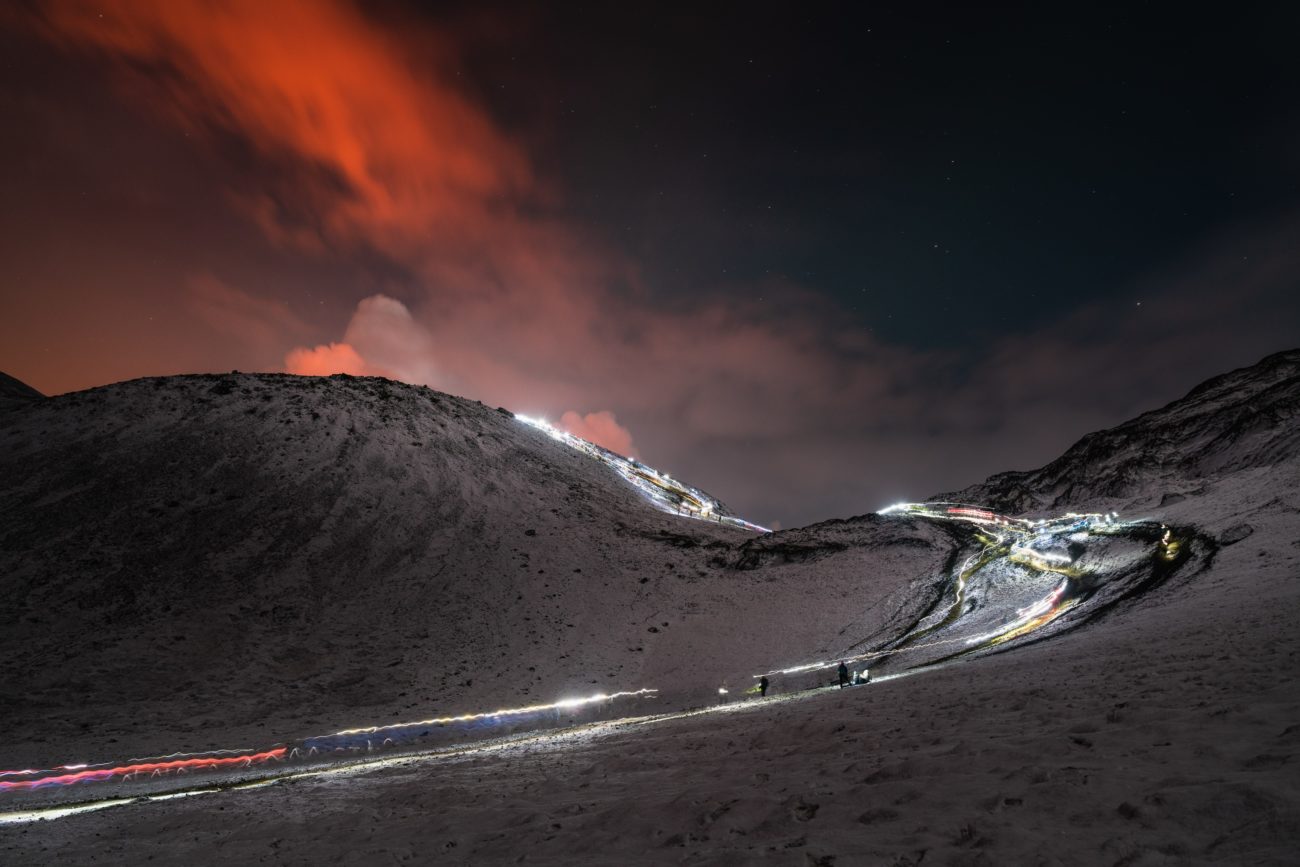Fagradalsfjall eruption: Iceland’s newest volcano
UPDATE: On the 10th of July 2023, a new volcanic eruption started near Litli Hrutur mountain in the Fagradalsfjall area, after a few days of many earthquakes in the area. The eruption lasted until the 8th of August 2023.
After weeks of earthquakes – nearly 40,000 total – a volcanic eruption began on March 19, 2021 on Iceland’s Reykjanes Peninsula at the site of Fagradalsfjall mountain close to the town of Grindavik near the famous Blue Lagoon. The area is known as Geldingadalir and it’s just a short distance from Iceland’s capital city, Reykjavík.
Within 24 hours of the eruption, thousands of locals were flocking to the site to catch a glimpse of the molten hot lava spewing from the ground—the photo opportunity simply can’t be beat.

This volcano isn’t your run-of-the-mill volcano either. It is a rare and primitive form of volcano known as a Tuya, which makes this eruption especially interesting to experts and lay people alike. Tuya volcanos, which are flat topped and steeped on the sides, are formed in places where there is active volcanism and glaciers in the same period of time.

The volcano erupted for almost six months and created a dramatic new lava field.
On the 3rd of August, 2022 a new eruption began in the Meradalur valley in the Fagradals area. The eruption lasted a short while and ended on the 24th of August.
Almost one year later, on the 10th of July 2023, a new eruption began near Litli Hrutur mountain near both the Fagradalsfjall area and Mt. Keilir. The eruption started out stronger than the other two but quickly decreased in strength. It was considered over on the 8th of August 2023.

Currently, only one hiking trail is open to view the Litli-Hrutur volcano. The trail is considered challenging (difficult), and hikers should be experienced in rocky hiking conditions with elevation. The trail is 20km (12 miles) there and back, and it takes 6-8 hours to hike, plus the time visitors want to spend viewing the volcano. The hike trailhead starts from Road 427 east of Grindavik. Parking area P2 is the designated parking lot; please note it is illegal to park along the side of the road. The Safetravel website posts important updates with weather and trail conditions. This website also includes a list of what to wear and bring for the hike. Please note children younger than 12 years old are not allowed to visit the eruption site.
Note: While visitors are still arriving by the thousands, many for their second and third time, the area isn’t entirely safe. Iceland’s volunteer search and rescue team (ICE-SAR) has been working tirelessly to protect visitors in the area. That’s why it’s important to be prepared and follow the official health and safety guidelines which can be found at Safetravel.is.
